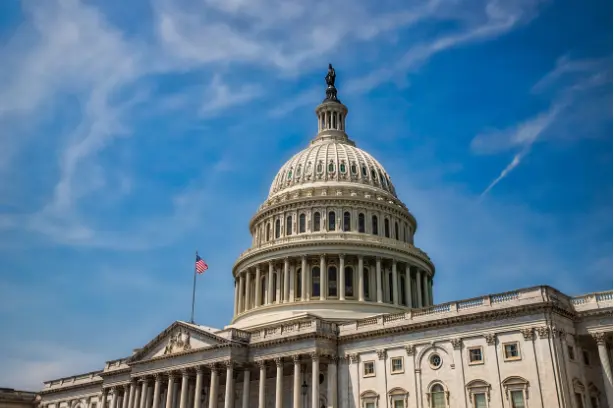By Preserve Gold Research
Gone are the days when death was the biggest fear among Americans. According to a recent survey by Allianz Life, financial insecurity has now overtaken death as the top fear as retirees worry about their dwindling savings. The survey found that 61% of respondents were more afraid of outliving their money than they were of dying — an unsurprising result given the current state of the economy and rising costs of living.
The study, which surveyed a group of 1,000 middle-class Americans 25 and older, also found that 56% of respondents view “financial crises” as a permanent aspect of their retirement planning while 46% have had no choice but to decrease or entirely halt their retirement savings, with little hope of resuming saving anytime soon. According to the data, close to 40% of Americans acknowledge that their retirement plan has been thrown off course, and they lack clarity on when or how they will be able to get it back on track.
Death is inevitable. Financial security isn’t. The fear of outliving one’s savings can have a profound impact on an individual’s mental and emotional well-being, causing anxiety and stress that can negatively affect their overall health. This shift in fears is indicative of a larger trend occurring in the United States — one of chronic financial insecurity and a declining sense of economic stability. With more and more Americans facing precarious financial situations, it’s no surprise that financial insecurity has become the top fear among a majority of the population. But how did we get here? How did financial insecurity overtake the fear of death in the minds of Americans?
The Fear of Financial Ruin
The once-attainable dream of a comfortable retirement has now become a distant reality for millions of Americans who are struggling to make ends meet. The rising costs of living, coupled with stagnant wages and increasing debt, have left millions of individuals and families living paycheck to paycheck, with little room for savings or emergency funds. For those fortunate enough to have been able to save for retirement, the volatile stock market and unpredictable economic climate have caused many to question the stability of their savings and future financial security. But it’s not just retirees who are feeling the effects of financial insecurity — young adults, saddled with debt and struggling to find stable, well-paying jobs, also fear for their financial future. According to the Allianz life survey, 63% of millennials say that it is taking them longer to achieve financial independence than it did for their parents’ generation.
So, how did we get here? Over the past few decades, traditional employer-sponsored pension plans have been disappearing as companies have shifted to 401(k) plans, leaving individuals solely responsible for saving and investing for their own retirement. For many Americans, this has meant having to navigate complex and ever-changing investment options with little knowledge or support from their employers. For others, it means relying solely on government programs like Social Security, which is already facing funding issues that could result in reduced benefits for future retirees. According to U.S. Census Bureau data, over two-fifths of baby boomers don’t have any retirement savings at all. With average monthly Social Security benefits covering only a fraction of the average retiree’s expenses, it’s not surprising that financial insecurity has topped the list of fears among Americans.
At the same time, the average life expectancy has increased, leading to longer retirement periods and the need for more substantial savings. Census data shows that over the last four decades, the average life expectancy for Americans has increased by almost 10 years, meaning that individuals now need to save more than ever to support themselves through a longer retirement. By 2060, the U.S. Census Bureau estimates that the number of Americans over 65 will outnumber those under 18 for the first time in history — a demographic shift that will only exacerbate the issue of financial insecurity among retirees. Given the Social Security Administration’s estimates that trust fund reserves for Social Security, the primary source of income for many retirees, will be depleted by 2037, the looming question of how retirees will support themselves in old age becomes even more pressing.
With average retirement savings falling short and longer retirement periods ahead, more and more Americans are being forced to confront the harsh reality of financial insecurity and its consequences. According to a recent Paychex survey, 1 in 6 retirees are now considering returning to the workforce, with 55% of respondents citing financial reasons as the primary motivation. Last year, those with retirement savings heavily exposed to the stock market saw their savings plummet as the bear market ravaged the economy forcing many to delay retirement plans or look for alternative sources of income. At the beginning of 2022, the average balance in work-sponsored retirement plans stood at $144,280, but by the end of the year, that number had dropped to $111,210 — a decrease of over 20% in just one year. According to the Center for Retirement Research at Boston College, the sharp market selloff wiped out almost $3 trillion in retirement savings, causing many to question whether traditional methods of retirement planning are still viable.
In recent years, countless Americans have witnessed their financial security slip away, facing dwindling options and a growing sense of unease about their future. Persistently high inflation has diminished the purchasing power of fixed incomes for retirees while rising healthcare costs have put an additional strain on already stretched budgets. Today, nearly two-thirds of the U.S. adult population are living paycheck to paycheck, with little to no savings for emergencies or retirement. At the same time, total household debt, which hit a record high of $17.06 trillion in the second quarter of this year, has continued to rise, leaving many retirees and those nearing retirement saddled with debt in their golden years. For those without traditional pensions or substantial savings, even a small unexpected expense can have catastrophic consequences for retirees.
As the traditional social safety nets that once provided a sense of security in old age continue to erode, more and more Americans are realizing that they need to take control of their financial future. The key question now is: how do we do it?
Taking Control of Your Financial Future
With the cost of living continuing to rise, and the future of Social Security uncertain, many have found that relying solely on traditional retirement plans and government programs is no longer enough. Longer life expectancies, rising healthcare costs, and a nation inundated with debt, have forced Americans to reevaluate their financial plans for retirement. While traditional retirement savings methods may have worked in the past, the current economic and demographic landscape has changed, bringing with it new challenges and opportunities.
This is where a precious metals IRA can serve as a valuable tool for retirement planning – offering diversification and long-term preservation of savings. Precious metals, like gold and silver, have a long history of retaining their value, even in times of economic downturns or market volatility. In six out of eight of the last recessions in the US, gold has outperformed the stock market by an average of 37% – a testament to its ability to serve as a hedge against market volatility. Largely uncorrelated with traditional stock and bond markets during risk off periods, precious metals can offer a level of stability when it matters most. By investing in a precious metals IRA, individuals can help diversify their retirement savings with hard assets that have real, intrinsic value. And unlike paper assets that can be inflated away or manipulated by central banks, precious metals offer a level of protection against inflation and currency devaluation.
Additionally, physical precious metals also offer a level of privacy and confidentiality that is not available with traditional retirement plans. With a self-directed IRA, individuals can choose the type of precious metals they want to invest in and have full control over their investment decisions. This includes the ability to purchase physical gold or silver coins or bars, which can be stored in a secure depository location of their choice. This level of control is particularly appealing for retirees who are concerned about the state of traditional financial institutions and want to have direct ownership over their retirement assets.
For Americans approaching retirement, experts say diversification is the key to help protect savings against market downturns. As traditional retirement savings options continue to face challenges, diversifying with a precious metals IRA can provide a much-needed layer of protection for retirement savings, insulating it against potential losses while also providing the opportunity for growth.







